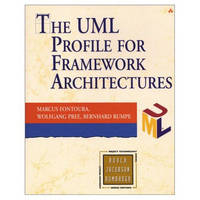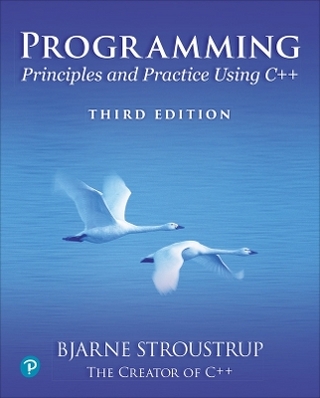
UML Profile for Framework Architectures
Addison Wesley (Verlag)
978-0-201-67518-4 (ISBN)
- Titel ist leider vergriffen;
keine Neuauflage - Artikel merken
The aim of the UML profile for framework architectures is the definition of a UML subset, enriched with a few UML-compliant extensions, which allows the annotation of such artefacts. Thus, the resulting profile that we call UML-F does not correspond to a specific domain, but to framework technology. Though profiles might be standardized in the future, sound proposals from various communities will get the process of defining and standardizing UML profiles started. In that sense, this book sets the stage for the UML profile for framework architectures.
About the authors: Dr. Marcus Fontoura worked as a leader of several framework projects in the last four years. His interests include software engineering tools and environments, object-oriented design, and Web-based software development. He conducts his work at Department of Computer Science, Princeton University, U.S.A Dr. Wolfgang Pree is a professor of computer science at the University of Constance, Germany, and head of the Software Research Lab. He has worked for many years in various areas of software engineering, in particular focusing on object-oriented software development, frameworks, software architectures, and human-computer interaction. Dr. Bernhard Rumpe currently conducts research at the Munich University of Technology, Germany. In various publications he contributed to the UML standardization, including discussions of integrated semantics for several UML notations and methodical approaches to use UML more effectively. His interests include management and methodology in e-commerce projects.
Part I: The UML-F profile 1 Chapter 1: Why a UML profile for frameworks? 3 1.1 UML profiles 3 1.2 Object-oriented frameworks—extensibility is the key 5 1.2.1 White-box components of frameworks 7 1.2.2 Black-box components of frameworks 8 1.3 Pros and cons of frameworks 9 1.3.1 UML-F as a means of supporting framework
development and adaptation 10 1.4 Goals for the UML-F profile 11 Chapter 2: UML essentials for framework documentation 13 2.1 UML overview 14 2.2 Class diagrams 15 2.3 Object diagrams 19 2.3.1 Object diagram example 19 2.3.2 Exemplar nature of object diagrams 21 2.4 Sequence diagrams 22 2.4.1 Sequence diagram example 23 2.4.2 Considerations about collaboration diagrams 24 2.5 Summary 26 Chapter 3: Basic elements of the UML-F profile 27 3.1 UML-F as a profile 28 3.1.1 Properties of the UML-F profile 28 3.2 UML-F tags — standard UML tagged values and stereotypes unified 31 3.2.1 Stereotypes 31 3.2.2 Tagged values 33 3.2.3 UML-F tags for describing properties 34 3.3 Standard UML tags for framework documentation 35 3.4 UML-F presentation tags 38 3.4.1 Completeness and abstraction 38 3.4.2 Flat and hierarchical representation of classes
and expanded class views 41 3.4.3 UML-F extensions of the object diagram notation 44 3.4.4 Tags for sequence diagrams 45 3.5 UML-F framework tags 51 3.5.1 Framework and application classes 52 3.5.2 Overview of adaptation tags 53 3.5.3 Method adaptation tags 54 3.5.4 Tags in the context of classes and interfaces 57 3.5.5 Tags in the context of generalization 59 3.6 The UML-F mechanism for defining new tags 63 3.7 Summary 65 Chapter 4: UML-F tags for framework construction
principles and patterns 67 4.1 Unification principle — adaptation by inheritance 68 4.1.1 UML-F template and hook tags 72 4.1.2 UML-F tags for the Unification construction principle 77 4.2 Separation principle — adaptation through composition 79 4.2.1 Compositional adaptation with predefined black-box
components 80 4.2.2 Extending a set of black-box components at runtime 81 4.2.3 UML-F tags for the Separation construction principle 83 4.3 Terminology and concept excursion: abstract classes, abstract
coupling, Java interfaces 87 4.3.1 Abstract classes and abstract coupling 87 4.3.2 Java interfaces 88 4.4 Hooks as name designators of pattern catalog entries 91 4.4.1 GoF patterns with a template—hook unification 92 4.4.2 GoF patterns with a template—hook separation 93 4.4.3 GoF patterns with recursive template—hook combinations 94 4.5 UML-F tags for framework patterns 95 4.5.1 UML-F tags for the Factory Method pattern 97 4.5.2 UML-F tags for the Strategy pattern 99 4.5.3 UML-F tags for the Composite pattern 103 4.5.4 UML-F tags for a domain-specific pattern 107 4.5.5 UML-F tags for non-framework GoF patterns? 110 4.6 How essential framework construction principles scale 110 4.6.1 Finding a balance between template and hook methods 111 4.7 Summary 112 Chapter 5: Framework adaptations of UML-F pattern annotations 113 5.1 Cookbooks for framework adaptation 113 5.2 A sample cookbook recipe 116 5.3 Recipe for adapting the Unification construction principle 119 5.4 Recipe for adapting the Separation constuction principle 120 5.5 Recipe for adapting the Composite pattern 121 5.6 Automating the adaptation of UML-F pattern annotations 123 5.7 Summary 123 Part II: UML-F @ work 125 Chapter 6: UML-F based documentation and
adaptation of the JUnit testing framework 127 6.1 An overview of JUnit 127 6.1.1 Test cases 129 6.1.2 Test suites 130 6.1.3
| Erscheint lt. Verlag | 12.12.2001 |
|---|---|
| Reihe/Serie | Addison-Wesley Object Technology Series |
| Verlagsort | Harlow |
| Sprache | englisch |
| Maße | 187 x 234 mm |
| Gewicht | 440 g |
| Themenwelt | Informatik ► Software Entwicklung ► Objektorientierung |
| ISBN-10 | 0-201-67518-8 / 0201675188 |
| ISBN-13 | 978-0-201-67518-4 / 9780201675184 |
| Zustand | Neuware |
| Haben Sie eine Frage zum Produkt? |
aus dem Bereich


